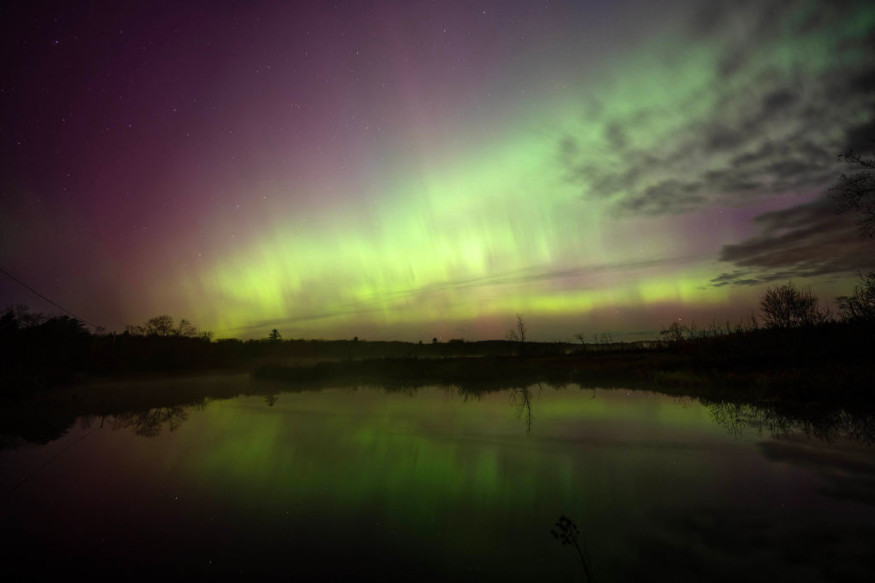
Aurora enthusiasts, prepare for an incredible light show this week. Experts from the U.S. National Oceanic and Atmospheric Administration (NOAA) predict a significant geomagnetic storm that could light up the skies between Thursday and Friday, Oct. 10-11.
The geomagnetic storm is expected to reach G4 classification, the second-highest level on NOAA's geomagnetic storm scale, which measures the strength and potential effects of storms on Earth.
G4 Geomagnetic Storm Expected This Week
This G4 geomagnetic storm warning is significant because it is only the second time such a warning has been issued since 2005. The last event occurred in May, leading to stunning auroras that delighted skywatchers.
On Oct. 8, a powerful X1.8-class solar flare erupted from sunspot AR 3848. This intense X flare caused radio blackouts in sunlight-illuminated areas of Earth. NOAA's Space Weather Prediction Center (SWPC) analyzed the flare and discovered it was linked to a coronal mass ejection (CME), a large burst of solar wind and magnetic fields released into space.
The CME is heading toward Earth and is expected to trigger significant geomagnetic activity upon arrival.
To understand how this works, consider how magnets interact. When two magnets with the same poles are pushed together, they repel each other. But opposite poles attract.
If the CME's magnetic field aligns with Earth's magnetic field, there will be a strong impact and an increase in geomagnetic activity. However, extreme levels are unlikely. If the magnetic fields connect positively, stronger geomagnetic responses and more intense auroras may occur.
The CME is traveling at remarkable speeds, ranging from 2.7 million to 2.9 million miles per hour (about 4.3 million to 4.7 million kilometers per hour), making it one of the fastest CMEs observed in recent years. It could impact Earth as early as Thursday morning, bringing significant geomagnetic activity.
READ MORE : Hypersonic Jet Promises London to New York Flight in Just One Hour, Test Flight Scheduled for 2025
Potential Radio, Power System Disruptions During Auroras
The arrival of the CME can be compared to a cold front moving through the United States, where a sudden burst of wind precedes a temperature drop. Similarly, the shock front from the CME will hit Earth first, bringing immediate changes in speed and a stronger magnetic field.
Moreover, geomagnetic storms can disrupt radio communications and power systems and pose risks to satellites in orbit. However, they can also enhance the auroras, making them visible in areas where they are usually not seen.
If the storm intensifies and continues into the night, people living in the central eastern states, the lower Midwest, and Northern California may have a chance to witness these beautiful displays.
For the latest information, it is crucial to check the SWPC website and follow real-time updates on social media. The SWPC warns that a severe geomagnetic storm is expected to last through Friday.
According to Fox 5 Atlanta, officials caution that communication systems nationwide might face disruptions, and the intense storm could allow auroras to be visible as far south as Alabama.
Furthermore, the SWPC raised concerns about potential issues with power grids, GPS and radio communications due to this G4 storm. Voltage control may be significantly affected, leading to unintended shutdowns of essential equipment within the power grid.
© 2025 ScienceTimes.com All rights reserved. Do not reproduce without permission. The window to the world of Science Times.












